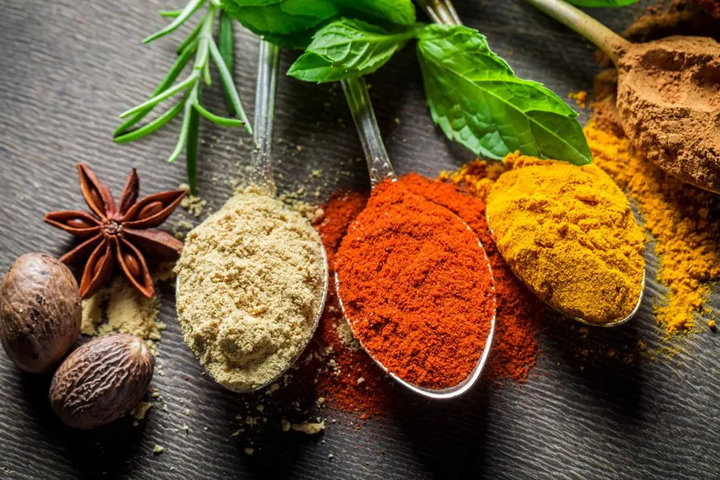KEYWORDS
Women’s health
Menopause
gummies
soy isoflavone
flavour
Skin
Metabolic
Joint
Immunity
Abstract
The evolving landscape of women's supplements presents exciting opportunities for formulators and forward-looking industry brands. In particular, we have seen a notable surge in tailored supplements, but more widely this market category has witnessed a robust 10% CAGR over the past decade (1). In terms of dose preference, gummies emerge as favoured delivery format, while personalized solutions gain traction among older demographics. This shift towards natural ingredients and holistic approaches underscores the importance of innovation and collaboration in meeting evolving consumer demands. Manufacturers must adapt by offering diverse, sensory-rich options, integrating premium ingredients, and leveraging scientific evidence to create best-in-class formulations.
The aim of the article is to explore the evolving landscape of women's health supplements, emphasizing the rise of gummies as a preferred delivery format and the growing consumer demand for natural, scientifically-backed ingredients. It highlights trends such as the increasing interest in personalized and holistic wellness solutions, the shift towards cleaner products, and the importance of innovation and collaboration in developing effective supplements tailored to women's diverse health needs throughout different life stages.
Introduction
The landscape of women’s health and wellness is undergoing a significant transformation. Buoyed by an unprecedented surge in supplements tailored specifically for women health needs. From premenopausal vitamins to beauty-enhancing nutrients to bone health solutions, the market is brimming with diverse offerings aimed at addressing all aspects of women’s well-being. In fact, over the past decade, the women’s health supplements market has experienced a notable 10% compound annual growth rate (CAGR), with over 170 new women’s health supplement launched globally in the last year (1,2).
Also evident is a continued and sustained interest in supplements that offer a positive sensorial experience such as gummies, which is one of the most popular delivery formats for women’s health supplements (3). Consumers prefer gummies for their convenience, pleasant taste and overall enjoyable experience, making them an attractive option for meeting daily nutritional needs. Formulators in the industry are responding to such consumer preferences by adding a variety of scientifically studied nutritional ingredients in a gummy format that meets various dietary preferences (vegan, sugar free) and taste profiles. Offering versatility in terms of sensory profile and organoleptic qualities and driving innovative product development.
Another key trend that we have observed, particularly in Europe, is the growing emphasis on cleaner and more natural products. This shift has resulted in a heightened demand for supplements derived from natural sources, reflecting a trend from the F&B category which has moved to supplements (4).
Concurrently, consumers are increasingly prioritizing products boasting superior formulations and enhanced technical attributes, emphasizing the importance of "better ingredients" backed by scientific evidence. Additionally, they demand products that include fewer additives deemed "unhealthy" by consumers, such as artificial colours, and sweeteners and more of plant-derived ingredients and products.
These insights compel us, as manufacturers, to continually innovate and develop new formulations to meet the changing demands. This entails working with customers and staying ahead of consumer trends that drive change.
Significantly, to product development teams, women across many age groups exhibit a stronger interest in gummies, compared to males (3). Manufacturers globally including us are, therefore, responding by introducing premium ingredients in unique formulations i.e using branded ingredient with known benefits for example Novasoy- from ADM, which is a soy isoflavone scientifically shown to reduce menopause symptoms (5).
Combinations targeting individual needs are gaining traction, as women over the age of 55 have emerged as the largest demographic purchasing supplements in a recent survey (3). This has led to a cascade of interest from brands. For example, nutraceuticals tracked with a menopause claim are among the fastest-growing class of innovative products, with an average annual growth rate of 22% in Europe from 2019-2023 (2). For example, nutraceuticals that help improve hormonal balance are among the fastest-growing class of innovative products, with a remarkable 66% increase in product launches in this category in 2022-23 compared to 2018-19 (6).
The remarkable expansion of this category of supplements can also be attributed to a growing awareness of and preference for holistic approaches to well-being. More than one-third of female consumers prefer nutritional supplements over medication, seeking preventative and lifestyle solutions to support their health (7).

Semi-direct impact: polyphenols and gut health
Despite hormone replacement therapy being the primary medical treatment for menopause, only a quarter of perimenopausal women globally use prescription medicine. This reluctance is likely due to associated risks, driving a preference for preventative and lifestyle solutions, with a significant portion opting for vitamins or supplements (7).
Consumers prioritizing cleaner, more natural products has led to a rise in demand for supplements that are derived from natural sources or combine traditional women's ingredients with natural extracts and herbal solutions. As a result, innovation in the market is being driven by women of today who are armed with a greater quantity and quality of information and are very conscious about what they are putting in their bodies.
This shift in consumer behaviour highlights the necessity of providing tailored solutions that resonate with the evolving needs and preferences of women. We are aware that woman's nutritional requirements undergo significant changes throughout various stages of her life, spanning from puberty and menstruation to pregnancy, breastfeeding, and menopause and healthy aging. By offering personalized solutions, manufacturers can seize the opportunity to integrate innovative and scientifically- backed actives, cater to the surging demand in a rapidly expanding product category, and develop premium offerings for esteemed brands. The fastest growth in the women’s health class in the next few years will come from products increasingly tailored to their individual circumstance, lifestyle and age.
However, it's important to acknowledge the complexities involved in formulating these advanced nutraceuticals with stable organoleptic properties. It's not merely about bringing any gummy to market; it is about delivering a best-in-class gummy infused with innovative ingredients, something which demands significant resources and expertise. For example, our gummy for pre-menopausal women incorporates ADM’s soy isoflavone, scientifically proven to mitigate hot flashes while supporting cognition and bone health (8,9). Despite the ingredient’s inherent bitterness, masking techniques have been employed to ensure a pleasant-tasting gummy form. By utilizing cross-continental formulation and R&D teams, other unique combinations are being developed in our labs. In fact, on the back of this research we have recently launched at Vitafoods’24 an entire women’s health platform - spanning some 25 formulations.
In terms of natural ingredients, evening primrose oil (EPO) has surged in popularity as a leading herbal ingredient for menopause care, capturing the attention of women seeking natural remedies. It reduces hot flashes and calms the body and during menopause (10). In response, a new gummy and softgel using certified organic EPO were introduced, offering European customers for the first time a unique organice option. In prenatal nutrition, DHA (Docosahexaenoic Acid) is widely recognized as essential during pregnancy, contributing to the maintenance of normal brain, heart, and vision function during and after pregnancy (11). Algal oils are gaining acceptance as a vegan sustainable source of DHA and omega-3, crucial for foetal development and maternal well-being (12), especially as doctors increasingly caution against consuming certain fish due to heavy metal concerns. Omega-3 gummies offer plant-based and great-tasting alternative to traditional fish oil supplements as many expecting women find the taste and texture of fish unappealing during pregnancy.
Postnatally, brain fog is a common new mum complain but there aren’t many supplements in the market for it. Our products for young mothers include, ingredients like chaga and cordyceps mushrooms that have been shown to help alleviate cognitive dysfunction, promoting vitality and cognitive health (13). For urinary tract health, antioxidant-rich cranberry aids in regulating bacterial fauna and reducing outbreak severity, while hibiscus may prevent bacteria adherence (14,15).
Finally, emerging research underscores the significance of supplements in enhancing gut health among women. Formulations rich in fibres and pre and postbiotics, play a crucial role in supporting the gut-brain axis, which influences mood, digestion, and immune function (16).

Conclusions
The landscape of women's health and wellness is witnessing a profound transformation, characterized by a surge in supplements uniquely tailored to address women's diverse needs. This growth is fuelled by an increasing demand for products that cater to every aspect of women's well-being, from energy and beauty to bone health and beyond. A notable trend driving this transformation is the popularity of gummies as a favoured delivery method for women's health supplements. Their convenience, enjoyable taste, and diverse options make them a preferred choice for meeting daily nutritional needs. Brands are responding to this preference by offering an array of gummies with unique flavours, shapes, and colours, thereby driving innovation in product development.
Furthermore, there is a discernible shift towards cleaner and more natural products, particularly in Europe, with consumers increasingly seeking supplements derived from natural sources. This emphasis on "better ingredients" and scientific evidence underscores the importance of formulating products that align with evolving consumer preferences.
Gut-joint-axis
Turmeric/Curcumin (HydroCurc®) is a perfect example for the joint health category; not only is HydroCurc® (turmeric/curcumin) high in polyphenols, but it has multiple clinical studies showing its benefits for joint health and discomfort. (18)

Gut-immune-axis
For this ingredient, we will go to the Mediterranean and Olivactive. Olivactive is derived from olive leaves, which are also high in polyphenols. (19) Olivactive is high in oleuropein, a powerful polyphenol that research has shown is a powerful antioxidant and impacts the immune system in multiple pathways. (20)
Gut-metabolic-axis
We will stay in the Mediterranean again with the ingredient Morosil (red moro orange). Red Moro oranges are high in anthocyanins (polyphenols), and research completed with Morosil shows it impacts body weight, waist circumference, and hip circumference. (21)
Gut-skin-axis
We will see amla listed if we refer to the list of ingredients with specific effects on gut health. Amla is also high in polyphenols, and research shows it is an excellent skin health, primarily in control of collagen metabolism. (22)
Conclusion
The growing body of evidence showing that botanicals play an important role directly on gut health and the microbiome is promising. With new research stating the impact of botanicals high in polyphenols on gut health and the microbiome leads us to ask the question, why not combine botanicals with probiotics to achieve a better outcome for the gut, and gut-blank-axis health concerns? Based on the growing body of evidence, botanicals should be considered a primary way to support both gut and gut-blank-axis health concerns.
References and notes
- Euromonitor 2022 www.euromonitor.com
- Innova Market insights 2024, data sourced from April 2022 to March 2023
- ITC 2023 Consumer supplement survey https://itcstrategy.com/insights/
- Analysis based on Mintel NPD database Mintel Data Integration | Mintel
- Menopause, “Extracted or synthesized soybean isoflavones reduce menopausal hot flash frequency and severity: systematic review and meta-analysis of randomized controlled trials,” July 2012
- Supplement Trends targeting Women‘s health- Europe, Innova 2024
- Euromonitor: Transforming Women’s Health Empowering Women Through the Life Cycle, 2023
- Cui C, Birru RL, Snitz BE, Ihara M, Kakuta C, Lopresti BJ, Aizenstein HJ, Lopez OL, Mathis CA, Miyamoto Y, Kuller LH, Sekikawa A. Effects of soy isoflavones on cognitive function: a systematic review and meta-analysis of randomized controlled trials. Nutr Rev. 2020 Feb 1;78(2):134-144
- The American Journal of Clinical Nutrition, Impact of equol-producing capacity and soy-isoflavone profiles of supplements on bone calcium retention in postmenopausal women: a randomized crossover trial, September 2015
- Kazemi F, Masoumi SZ, Shayan A, Oshvandi K. The Effect of Evening Primrose Oil Capsule on Hot Flashes and Night Sweats in Postmenopausal Women: A Single-Blind Randomized Controlled Trial. J Menopausal Med. 2021 Apr;27(1):8-14
- Jiang, Y., Chen, Y., Wei, L. et al. DHA supplementation and pregnancy complications. J Transl Med 21, 394 (2023)
- Santigosa E, Brambilla F, Milanese L. Microalgae Oil as an Effective Alternative Source of EPA and DHA for Gilthead Seabream (Sparus aurata) Aquaculture. Animals (Basel). 2021 Mar 31;11(4):971
- https://happyfoxhealth.com/blogs/our-happy-fox-blog/best-mushrooms-for-brain-fog
- González de Llano D, Moreno-Arribas MV, Bartolomé B. Cranberry Polyphenols and Prevention against Urinary Tract Infections: Relevant Considerations. Molecules. 2020 Aug 1;25(15):3523.
- Cai T, Tiscione D, Cocci A, Puglisi M, Cito G, Malossini G, Palmieri A. Hibiscus extract, vegetable proteases and Commiphora myrrha are useful to prevent symptomatic UTI episode in patients affected by recurrent uncomplicated urinary tract infections. Arch Ital Urol Androl. 2018 Sep 30;90(3):203-207
- Appleton J. The Gut-Brain Axis: Influence of Microbiota on Mood and Mental Health. Integr Med (Encinitas). 2018 Aug;17(4):28-32



